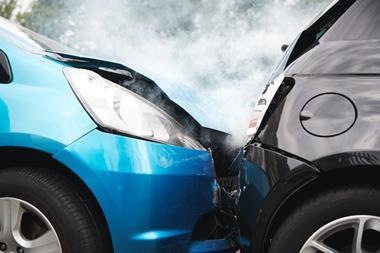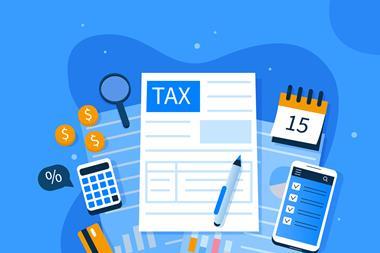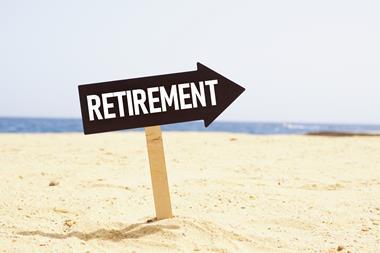The insurer’s claims director says that as lockdown has made it harder for these scams to occur, there could be a spike when restrictions lift
Car insurer, Ageas is predicting a rise in crash for cash induced collision scams over the coming months as lockdown lifts in the UK today on 19 July.
The insurer first saw a rise in cases by 150% after the first national lockdown was lifted in 2020 and this is expected to rise again.

Induced collisions are when a fraudster orchestrates an incident with an innocent victim to generate a claim, for example a motorist deliberately braking in front of another to cause them to crash into their vehicle.
Robin Challand, claims director at Ageas Insurance, said: “Lockdowns made it harder for crash for cash scammers to operate because with less traffic on the road it made it more difficult to disguise their actions.
“But as restrictions are lifted and road-use returns to more normal levels, that’s when we see these criminals start to re-emerge and put innocent motorists at risk by causing accidents. We’re urging motorists to be vigilant and be aware of some of the tell-tale signs of a scam.”
Crash for cash hotspots
Earlier this year the Insurance Fraud Bureau (IFB) published a list of the UK’s Crash for Cash hotspots, with Birmingham topping the list as the place with the highest prevalence of this type of crime.
Ageas has stated that its claims data reflects the IFB’s findings, with Birmingham among one of the top places that its customers have been targeted.
Meanwhile, Leicester, Coventry, Nottingham, Sheffield and Harrow and Romford in London were also hotspots according to the insurers claims data.
According to Ageas, these can include:
- The other person driving erratically before the incident, including sharp braking for no reason
- The driver starting to move onto a roundabout and then stopping for no reason
- The driver suddenly turning right on a mini roundabout, after appearing to be travelling straight over
- The driver encouraging you to pull out at a junction but then crashing into you.
- The driver handing pre-written information straight after the accident.
- The driver seemingly exaggerating their injuries.
- The driver acting particularly unphased after the collision.
- If the driver blames someone else who was driving erratically in front of them and has since driven off (this could be an example of the scammer using an accomplice).
- The rear passenger looking out the rear window (advising the driver when the vehicle behind is close).

Challand added: “We’ve been told of some instances where the scammers are quite aggressive after the accident; no doubt as a way of intimidating the victim and tricking them into acting so quickly that they don’t have time to question the events that have just happened.”
Making up for lost time
Meanwhile the IFB’s head of intelligence and investigations, Stephen Dalton, said: “As traffic levels continue to get back to normal, drivers should be cautious of ‘crash for cash’ scams on the road as fraudsters may sadly be looking to make up for lost time.
“It’s essential that drivers follow safe-driving guidelines to help prevent themselves from falling victim to this dangerous scam. In addition, if someone suspects they’ve seen a ‘crash for cash’ attempt it can be reported to our confidential and anonymous cheatline online or on 0800 422 0421.”
Challand added: “There are some steps motorists can take to avoid falling victim to these induced accidents. As well as being aware of what the tell-tale signs are, they should always keep a safe braking distance, be cautious when pulling out of side roads (especially if encouraged to by another driver) and remember to focus on the car as well as the brake lights as fraudsters often disable these to trick people into crashing.”
Ageas has therefore shared the following advice on what motorists should do if they think they’ve been involved in an induced accident:
- Don’t confront the other driver. They may be dangerous and in some cases Ageas has seen, they can act aggressively in order to intimidate their victims
- It’s important you still exchange details with the driver. It’s a legal offence not to. Provide your name, address, car registration and insurance details and make sure you get the same from them.
- Make a note of as much information as you can as quickly as you can after the accident before you forget. This could include information about the driver, any passengers, the circumstances of the collision. Pictures, dashcam footage and CCTV in the area are also useful.
- If there were any witnesses to the accident, get their details.
- Report the incident to the police and tell your insurer. If you have a suspicion that it might have been an induced accident, report it to the Police and tell your insurer.
- Report it to Cheatline. The Insurance Fraud Bureau’s Cheatline allows members of the public to report insurance fraud free, anonymously and confidentially.
Hosted by comedian and actor Tom Allen, 34 Gold, 23 Silver and 22 Bronze awards were handed out across an amazing 34 categories recognising brilliance and innovation right across the breadth of UK general insurance.





















































No comments yet